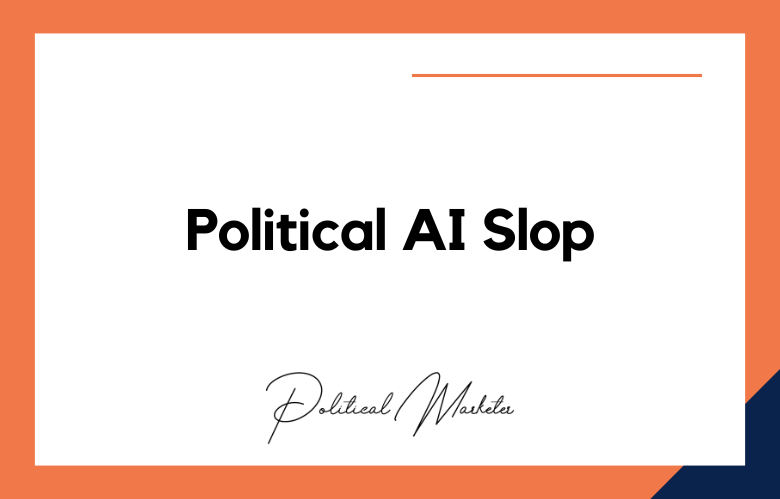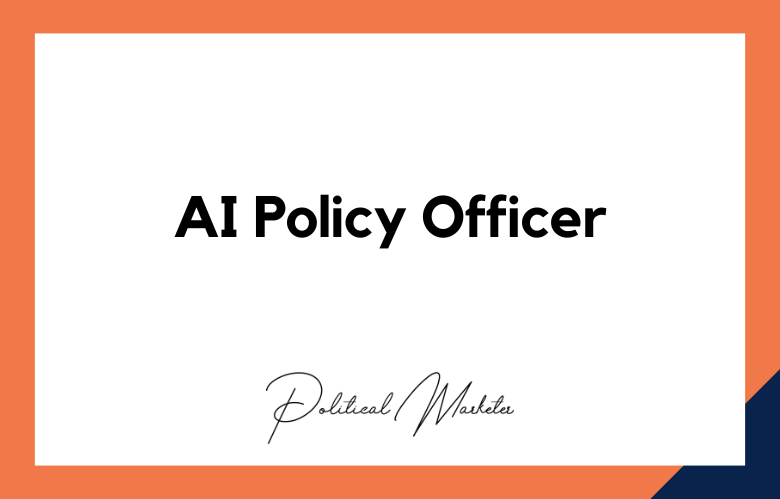Building a political party office with the latest AI technology can enhance the efficiency and effectiveness of campaigns while also providing valuable insights into voter preferences and behaviors. Here are some steps for incorporating AI technology into a political party office.
Political Party Office with the Latest AI Technology
-
Voter outreach and engagement: Use AI-powered chatbots or virtual assistants to engage with voters, answer their questions, and provide personalized information about the party’s platform and candidates.
-
Data analysis and targeting: Use AI-powered data analytics tools to analyze voter data, identify critical demographics and issues, and target campaigns more effectively.
-
Campaign management: Use AI-powered campaign management software to automate scheduling events, managing volunteers, and tracking donations.
-
Social media management: Use AI-powered social media tools to analyze trends, track conversations, and engage with supporters on social media platforms.
-
Fundraising: Use AI-powered fundraising tools to identify potential donors, tailor fundraising messages, and optimize campaigns for maximum impact.
-
Security: Use AI-powered security systems to protect sensitive data and prevent cyberattacks, ensuring the protection of the office’s operations.
A political party office with the latest AI technology is a cutting-edge campaign hub that leverages advanced artificial intelligence solutions to enhance efficiency, effectiveness, and engagement. This state-of-the-art office is designed to optimize campaign operations and provide valuable insights into voter behavior and preferences.
Some of the critical features of a political party office with the latest AI technology include:
AI-powered data analysis and management tools enable the collection, analysis, and action on large datasets on voter demographics, behavior, and preferences, providing valuable insights into voter trends and helping to inform campaign strategies.
AI-powered campaign management tools optimize resource allocation and maximize the effectiveness of campaign efforts. They help campaigns target specific voter segments, track the performance of ads and messaging, and make data-driven decisions.
AI-powered chatbots and virtual assistants for constituent engagement: These tools engage with constituents, answer their questions, and provide updates on campaign activities and policy positions, helping to build relationships and foster ongoing engagement with voters.
AI-powered fundraising tools: These tools identify potential donors, personalize outreach, and optimize the timing and frequency of fundraising appeals, helping campaigns raise more money and engage more effectively with donors.
AI-powered voter engagement tools: These tools identify and target potential voters, track their engagement with the campaign, and provide personalized messaging and outreach, helping to increase voter turnout and drive electoral success.
Integration with existing campaign management systems and databases: AI solutions must integrate seamlessly with existing systems to ensure smooth operations and data synchronization.
Security and privacy measures: AI solutions must be secure and comply with data privacy laws. Implement measures to protect sensitive data and prevent unauthorized access.
Continuous evaluation and optimization: Regularly evaluate the performance of the AI solutions and optimize their use based on the results. Use data and analytics to identify areas for improvement and make adjustments as needed.
Data collection and analysis: Use AI-powered data collection and analysis tools to gather and analyze large datasets on voter demographics, behavior, and preferences. This can provide valuable insights into voter trends and help inform campaign strategies.
How to Build a Political Party Office with the Latest AI Technology
Campaign management: Use AI-powered campaign management tools to optimize resource allocation and maximize the effectiveness of campaign efforts. These tools can help campaigns target specific voter segments, track the performance of ads and messaging, and make data-driven decisions.
Social media monitoring: Use AI-powered social media monitoring tools to track sentiment and trends on social media and identify emerging issues and concerns among voters. This can help campaigns stay ahead of the curve and respond effectively to public sentiment.
Predictive modeling: Use AI-powered predictive modeling to forecast voter behavior and election outcomes, providing valuable insights into the likely impact of campaign strategies and allowing for adjustments as needed.
Virtual assistants: Use AI-powered virtual assistants to handle routine tasks such as scheduling, email management, and constituent outreach, freeing up staff to focus on more strategic work.
Constituent engagement: Use AI-powered chatbots and virtual assistants to engage with constituents, answer their questions, and provide updates on campaign activities and policy positions. This can help build relationships and foster ongoing engagement with voters.
Fundraising: Use AI-powered fundraising tools to identify potential donors, personalize outreach, and optimize the timing and frequency of fundraising appeals. This can help campaigns raise more money and engage more effectively with donors.
Voter engagement: Use AI-powered voter engagement tools to identify and target potential voters, track their engagement with the campaign, and provide personalized messaging and outreach. This can help increase voter turnout and drive electoral success.
By incorporating AI technology into a political party office, campaigns can enhance their effectiveness and efficiency while gaining valuable insights into voter preferences and behaviors. This can help ensure that campaigns are well-positioned for success in the increasingly competitive world of political advertising.
Revolutionizing Political Party Infrastructure: The Role of AI in Building Modern Offices
Artificial intelligence (AI) is transforming how political parties operate, providing new tools and technologies that can enhance the efficiency and effectiveness of their campaigns. By incorporating AI into their infrastructure, political parties can build modern offices better equipped to engage voters, drive electoral success, and positively impact their communities.
Here are some ways in which AI can be used to revolutionize political party infrastructure:
Data-driven decision-making: AI can help political parties collect, analyze, and act on large datasets, providing valuable insights into voter behavior and preferences. This can inform campaign strategies and help optimize the allocation of resources.
Automated outreach: AI-powered tools can automate routine tasks such as email and social media outreach, freeing staff to focus on more strategic work. This can help increase campaigns’ efficiency and ensure messages reach the right audiences.
Predictive modeling: AI can be used to forecast election outcomes and voter behavior, providing valuable insights into the likely impact of campaign strategies. This can help campaigns adjust their approach as needed and maximize their chances of success.
Constituent engagement: AI-powered chatbots and virtual assistants can engage with constituents, answer their questions, and provide updates on campaign activities and policy positions. This can help build relationships and foster ongoing engagement with voters.
Fundraising: AI can be used to identify potential donors, personalize outreach, and optimize the timing and frequency of fundraising appeals. This can help campaigns raise more money and engage more effectively with donors.
Voter engagement: AI-powered voter engagement tools can identify and target potential voters, track their engagement with the campaign, and provide personalized messaging and outreach. This can help increase voter turnout and drive electoral success.
Office automation: AI can automate routine tasks such as scheduling, task management, and document processing. This can help streamline operations and free up staff to focus on more strategic work.
Building the Future of Politics: Integrating AI into Political Party Offices
Integrating AI into political party offices represents a significant opportunity to modernize the infrastructure of politics and drive success in the increasingly competitive world of political advertising. By leveraging the power of AI, political parties can enhance their effectiveness and efficiency while gaining valuable insights into voter preferences and behaviors.
Here are some critical considerations for integrating AI into political party offices:
Identify areas for improvement: Determine which campaign areas could benefit from AI solutions, such as data analysis, campaign management, fundraising, or voter engagement.
Choose the right tools: Evaluate different AI solutions and choose the ones that best fit your campaign’s needs and budget. Consider factors such as ease of use, integration with existing systems, and scalability.
Train staff: Provide training and support to ensure they are comfortable using AI solutions and understand how they can benefit the campaign.
Implement and test the chosen AI solutions and conduct testing to ensure they work as intended. Monitor the performance of the tools and make adjustments as needed.
Monitor and adjust: Continuously monitor the performance of the AI solutions and adjust your strategies as needed. Stay up-to-date on the latest developments in AI technology and explore new tools and solutions as they become available.
Integrate with existing systems: Ensure your AI solutions integrate seamlessly with your existing campaign management systems and databases.
Maintain security and privacy: Ensure that the AI solutions you choose are secure and comply with data privacy laws. Implement measures to protect sensitive data and prevent unauthorized access.
Evaluate and optimize: Regularly evaluate the performance of the AI solutions and optimize their use based on the results. Use data and analytics to identify areas for improvement and make adjustments as needed.
By integrating AI into political party offices, campaigns can leverage the latest technologies and strategies to engage with voters effectively, drive electoral success, and positively impact the communities they serve. By following these steps and staying up-to-date on the latest developments in AI technology, political parties can build a solid and successful infrastructure optimized for the digital age.
Enhancing Efficiency and Effectiveness: AI Solutions for Political Party Offices
Artificial intelligence (AI) revolutionizes political party offices’ operations, providing new tools and technologies that enhance efficiency, effectiveness, and engagement. By incorporating AI solutions, political parties can streamline their operations and achieve their goals more efficiently while providing valuable insights into voter preferences and behaviors.
Here are some AI solutions that can enhance the efficiency and effectiveness of political party offices:
Data analysis and management: AI can help political parties collect, analyze, and act on large datasets on voter demographics, behavior, and preferences. This can provide valuable insights into voter trends and help inform campaign strategies.
Campaign management: AI-powered campaign management tools can optimize resource allocation and maximize the effectiveness of campaign efforts. These tools can help campaigns target specific voter segments, track the performance of ads and messaging, and make data-driven decisions.
Automated outreach: AI can automate routine tasks such as email and social media outreach, freeing staff to focus on more strategic work. This can help increase campaigns’ efficiency and ensure messages reach the right audiences.
Predictive modeling: AI can be used to forecast election outcomes and voter behavior, providing valuable insights into the likely impact of campaign strategies. This can help campaigns adjust their approach as needed and maximize their chances of success.
Constituent engagement: AI-powered chatbots and virtual assistants can engage with constituents, answer their questions, and provide updates on campaign activities and policy positions. This can help build relationships and foster ongoing engagement with voters.
Fundraising: AI-powered fundraising tools can identify potential donors, personalize outreach, and optimize the timing and frequency of fundraising appeals. This can help campaigns raise more money and engage more effectively with donors.
Voter engagement: AI-powered voter engagement tools can identify and target potential voters, track their engagement with the campaign, and provide personalized messaging and outreach. This can help increase voter turnout and drive electoral success.
By leveraging AI solutions, political party offices can enhance their efficiency and effectiveness, driving success in the increasingly competitive world of politics. These tools can help ensure that campaigns are well-positioned to engage with voters effectively and achieve their goals.
Conclusion:
Building a political party office with the latest AI technology can be a game-changer for political campaigns. By leveraging AI to analyze voter data, create personalized messaging, automate outreach efforts, and optimize campaign strategies, political parties can maximize their impact and drive success in the upcoming elections.
By following the steps outlined in this guide, political parties can successfully integrate AI technology into their operations, empowering their campaigns to reach and engage with voters in new and innovative ways. With the right approach, AI can help political parties achieve their goals and positively impact the communities they serve.
Call: +91 9848321284
Email: [email protected]
Political Party Office with the Latest AI Technology: FAQs
What is a smart political party office powered by AI?
A smart political party office integrates artificial intelligence tools for decision-making, operations, voter engagement, data analysis, and communication to streamline and modernize party functions.
Why should a political party invest in AI-powered infrastructure?
AI enables faster data processing, better voter understanding, optimized outreach, real-time analytics, and automation of routine tasks—making the party more efficient and responsive.
What AI tools can be used in a party office?
Common tools include CRM platforms with AI, AI chatbots for voter queries, facial recognition for security, predictive analytics for campaign planning, and generative AI for content creation.
Can AI help in voter data management?
Yes. AI systems can clean, categorize, and analyze voter databases, offering insights on behavior, preferences, and segment-specific strategies.
How does AI support communication within the office?
AI-powered communication platforms automate internal messaging, schedule meetings, summarize discussions, and enhance collaboration through natural language processing.
Is it possible to use AI for political content generation?
Absolutely. Generative AI tools like ChatGPT can write press releases, social media posts, newsletters, and speeches, customized for different audiences.
What role does AI play in party event planning?
AI can analyze attendee behavior, predict turnout, automate invitations, optimize venue layouts, and generate post-event engagement metrics.
Can AI enhance cybersecurity for political offices?
Yes. AI tools detect anomalies, monitor digital threats, protect voter databases, and ensure secure communication through adaptive threat intelligence.
What is an AI-based war room in politics?
It is a data-driven control center using real-time dashboards, sentiment tracking, and predictive modeling to manage campaigns, crisis response, and strategic decisions.
How can AI personalize voter engagement from the office?
AI can deliver hyper-personalized messages via email, SMS, or social media based on voter demographics, location, and past interactions.
Is facial recognition technology used in modern political offices?
Yes. AI-driven facial recognition is used for staff attendance, security access, and VIP guest recognition at party headquarters or events.
Can AI assist in drafting party manifestos?
AI can analyze public opinion, policy trends, and competitor documents to help draft evidence-backed, voter-aligned manifestos.
What hardware is needed for an AI-enabled office?
Essential hardware includes high-speed servers, smart displays, AI-enabled surveillance systems, voice assistants, and advanced computing infrastructure.
How do AI dashboards help political leaders?
Dashboards provide visual insights into voter sentiment, campaign performance, staff productivity, issue trends, and more—all updated in real-time.
Can AI reduce operational costs for a party office?
Yes. AI automation reduces human labor for repetitive tasks, enhances resource allocation, and increases overall organizational efficiency.
What ethical issues arise from using AI in politics?
Concerns include data privacy, surveillance, algorithmic bias, and misuse of AI-generated content—all of which require transparent policies and governance.
How can AI support volunteer coordination?
AI tools can match volunteer availability with campaign needs, automate shift planning, and track volunteer engagement and feedback.
Are there AI tools for real-time political trend analysis?
Yes. Sentiment analysis, keyword tracking, and AI news aggregators help political parties monitor and act on trending issues and narratives.
Can AI be used to simulate political scenarios?
AI-driven simulators model campaign outcomes, media reactions, and public sentiment shifts to support strategic planning and risk assessment.
How can AI improve decision-making in party leadership?
By providing data-backed insights, scenario modeling, and automated reporting, AI empowers leaders to make informed, timely decisions aligned with party goals.










